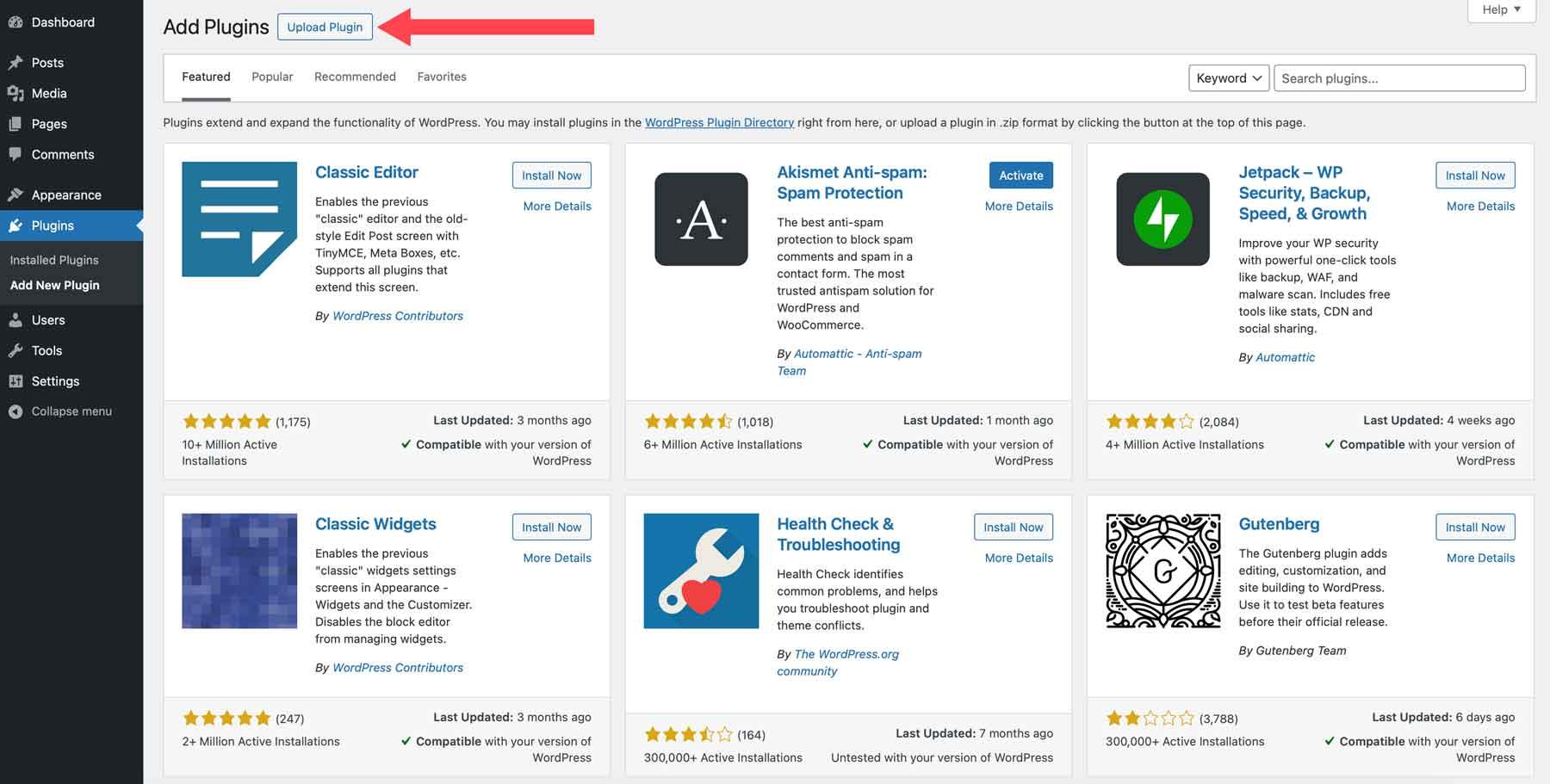Introduction: Mastering MySQL backup and Restore wiht MyDumper
Hey there, fellow database enthusiasts! Let’s talk about something that’s frequently enough overlooked but absolutely crucial for anyone working with MySQL: backups. We all know that data loss can be a nightmare—weather it’s due to accidental deletions, hardware failures, or even malicious attacks. But here’s the good news: there’s a powerful tool out there that can make your backup and restore process a breeze, and that’s MyDumper.
Imagine having a reliable way to safeguard your precious data while also ensuring that recovery is swift and efficient when the unexpected happens. With MyDumper, you can streamline your MySQL backups, significantly reducing downtime and giving you peace of mind. In this article, we’ll dive into what MyDumper can do for you, explore its features, and guide you through the backup and restore process. By the end, you’ll see why MyDumper is a game changer for MySQL users looking to enhance their data management strategies. So, grab a cup of coffee, and let’s get started on your journey to becoming a backup wizard!
Understanding MyDumper: The Go-To Solution for MySQL Backup Needs
When it comes to MySQL backup solutions, MyDumper stands out as an exceptionally efficient tool that simplifies the backup process while ensuring high performance. Unlike traditional methods that can be slow and cumbersome, MyDumper leverages a multi-threaded approach to significantly speed up data extraction. This means you can back up large databases in a fraction of the time, allowing you to focus on other critical tasks.
one of the key benefits of using MyDumper is its ability to handle large datasets with ease. Here are some advantages that make it the preferred choice for many developers and database administrators:
- Multi-threaded Backups: MyDumper can utilize multiple threads to perform backups, drastically reducing the time required for the process.
- Consistency and Integrity: With MyDumper, you can be assured of data consistency during backups, which is crucial for maintaining the integrity of your database.
- Flexible Output Options: The tool allows backups to be stored in various formats, making it easier to integrate with different systems and storage solutions.
- Easy Restoration: MyDumper not only excels at backup but also streamlines the restoration process, saving you time and hassle when you need to recover your data.
Moreover, the architecture of MyDumper is designed with performance in mind. Using parallel processing, it extracts data from the database and writes it to disk concurrently. This capability ensures that your databases remain available to users even during backup operations, minimizing any potential disruption. The table below summarizes the performance benefits of using MyDumper over traditional MySQL backup tools:
| Feature | MyDumper | Traditional Tools |
|---|---|---|
| Backup Speed | High (multi-threaded) | Low (single-threaded) |
| Data Consistency | Yes | Sometimes |
| Ease of Use | User-amiable CLI | Complex configurations |
| Restoration Time | Slow |
if you’re looking to streamline your MySQL backup and restoration process,MyDumper is undoubtedly a solution worth considering. Its speed, efficiency, and user-friendly features make it an essential tool for any MySQL database management strategy. With MyDumper, you can rest easy knowing your data is safe and backups are handled swiftly, leaving you with peace of mind to focus on growing your business.
Why You Should Consider mydumper Over Traditional Backup Methods
When it comes to database backups, many administrators tend to stick with traditional methods, often overlooking modern solutions that offer enhanced efficiency and performance. MyDumper stands out as a robust option, providing features that can significantly outpace the standard tools many are accustomed to. Here’s why you should consider making the switch.
Speed and Performance
One of the most compelling reasons to choose MyDumper is its exceptional speed. Unlike traditional backup solutions that operate in a single-threaded manner, mydumper utilizes multi-threading, allowing it to perform concurrent reads and writes. This means your backup processes can be completed in a fraction of the time,minimizing downtime and improving overall system performance. Consider the following:
- Traditional Tools: Frequently enough slow and cumbersome, taking hours for larger datasets.
- MyDumper: Can deliver backups in minutes, thanks to its optimized architecture.
Compression and Storage Efficiency
Another advantage of using MyDumper is its built-in compression capabilities.Traditional backup methods often require significant storage resources to maintain multiple copies of your database. MyDumper, on the other hand, compresses data efficiently, resulting in smaller file sizes. This can lead to substantial savings in storage costs and improved data transfer speeds. Here’s how it stacks up:
| Backup Method | File Size | Storage Requirement |
|---|---|---|
| Traditional Backup | 4 GB | 4 GB |
| MyDumper | 1 GB | 1 GB |
Flexible Restore Options
Restoring data can frequently enough be a headache,especially with traditional methods that may require extensive time and resources. MyDumper simplifies this by offering flexible restore options, allowing you to restore either the entire database or specific tables as needed. This level of granularity can save time and reduce the impact on your operational workflow. With MyDumper, you’re in control.
Enhanced Error Handling
additionally, MyDumper provides better error handling mechanisms compared to conventional tools. In a traditional setup, a single error during the backup process can lead to a complete failure, requiring re-runs and additional time. MyDumper, though, can log errors and continue processing other tables, ensuring that your backup is as comprehensive as possible, even in the face of hiccups.
Setting Up MyDumper: A Step-by-Step Guide to Get You Started
Getting started with MyDumper for your MySQL backup and restore tasks can seem daunting, but it doesn’t have to be. Follow thes straightforward steps to set things up smoothly and efficiently.
First, ensure you have MyDumper installed on your server. You can download the latest version from the official GitHub repository. Once downloaded, you can install it using the following commands:
tar -xzf mydumper-X.Y.Z.tar.gz
cd mydumper-X.Y.Z
mkdir build
cd build
cmake ..make
make installAfter installation, verify that MyDumper is working by typing mydumper -V in your terminal.If you see the version number, you’re ready to proceed.
Next, configure the MyDumper settings to optimize your backup process.You can create a configuration file to define parameters like the number of parallel threads and the output directory. here’s a simple example of what your config file might look like:
[mysqldump]
threads=4
outputdir=/path/to/backupBefore running your backup, ensure that your MySQL user has the necessary permissions. You can check this by executing:
SHOW GRANTS FOR 'your_user'@'localhost';to start the backup process, just run:
mydumper -u your_user -p your_password -B your_databasefor restoring data, you can use MyLoader, which comes with MyDumper. The command is similarly straightforward:
myloader -u your_user -p your_password -B your_database -d /path/to/backupwith these steps, you’re well on your way to harnessing the power of MyDumper for efficient MySQL backups and restores!
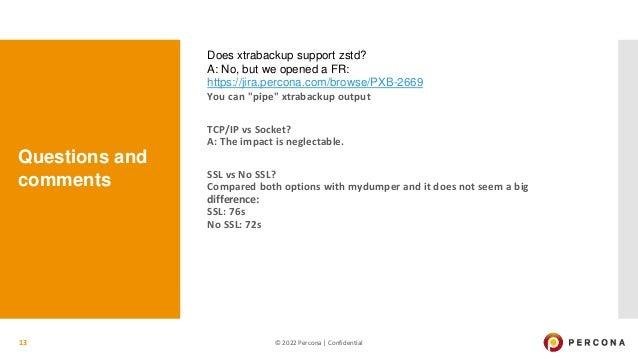
Mastering mydumper Commands for Efficient Backup Processes
When it comes to efficiently backing up your mysql databases, mastering MyDumper commands is crucial. MyDumper offers a powerful and flexible command-line interface that allows you to tailor your backup processes based on your specific needs. Understanding the most effective commands can significantly enhance your backup strategy.
Here are some essential MyDumper commands that you should be familiar with:
- -B : Specify the database to back up. This command allows you to focus on a single database rather than backing up all at once.
- -T : use this to back up specific tables. If you only need certain tables, this command saves time and storage.
- -o : Designate your output directory,ensuring that your backups are organized and easily accessible.
- –compress : Enable compression to reduce the size of your backups,which can save both space and time during the transfer process.
- –quiet : Use this flag to suppress output for cleaner logs, especially useful for automated scripts.
Along with these commands, it’s beneficial to understand how to utilize MyDumper’s multi-threading capabilities.By default, MyDumper can utilize multiple threads to speed up the backup process.You can specify the number of threads using the -B option,allowing for significant time savings,especially with large databases.
Consider creating a backup schedule using cron jobs, where you can automate your MyDumper commands. This approach reduces the risk of human error and ensures that your backups are consistently up to date. A simple cron job entry could look something like this:
0 2 * * * mydumper -B your_database -o /path/to/backup -T your_table --compress --threads=4By implementing these techniques and commands,you can leverage MyDumper to streamline your MySQL backup processes. The more you practice with these commands,the more efficient and confident you’ll become in managing your database backups,ultimately safeguarding your data effectively.
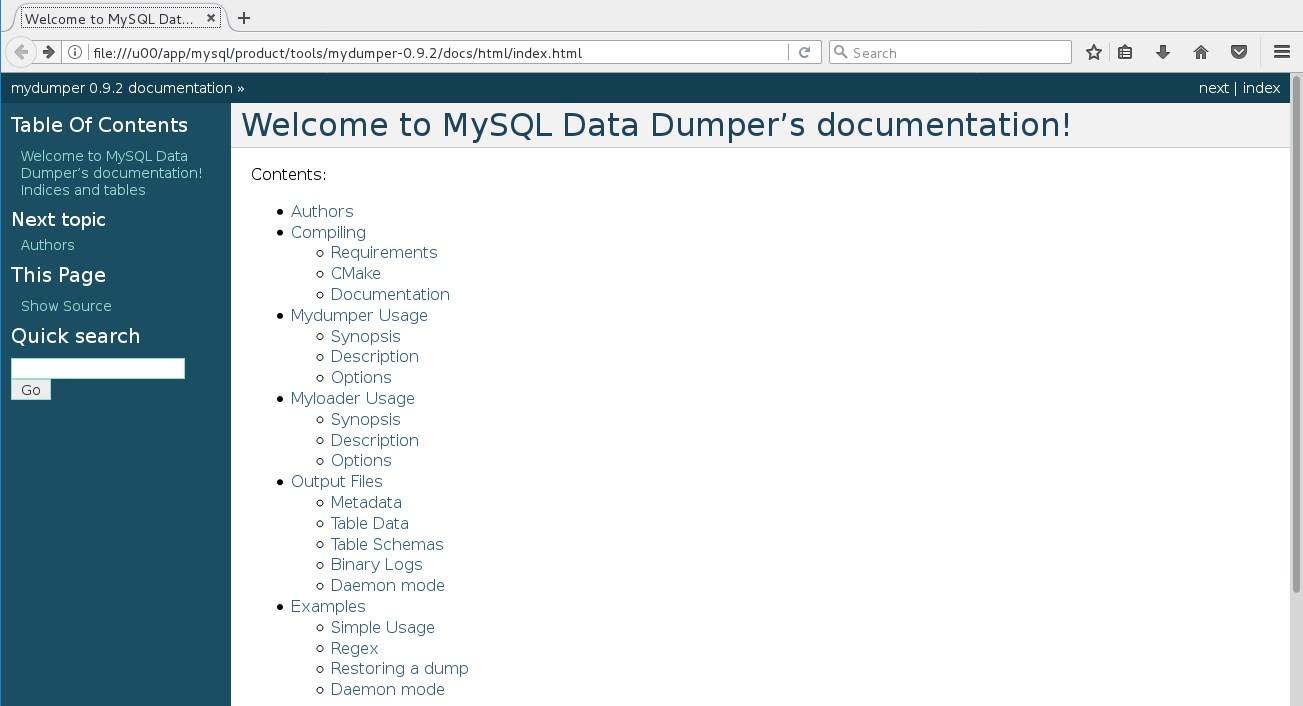
Restoring databases with MyDumper: A Simplified Approach
Restoring databases with MyDumper can be a seamless process that prioritizes efficiency and reliability.With the right approach, you can ensure that your data is restored quickly and accurately, minimizing downtime and maximizing productivity.
Before you begin the restoration process, here are a few essential steps to prepare:
- Ensure you have the latest version of MyDumper installed.
- Verify that your backups are intact and accessible.
- Prepare the target database by creating it if it doesn’t exist.
to initiate the restoration process, MyDumper offers a user-friendly command-line interface. Here’s a simple command to restore your database:
myloader -d /path/to/backup -u username -p password -B database_name
This command specifies the directory containing your backups, along with your database credentials and the target database name. It’s that straightforward!
One of the standout features of MyDumper is its ability to restore multiple tables in parallel, significantly speeding up the restoration process. You can easily customize the number of threads by adding the –threads option:
myloader -d /path/to/backup -u username -p password -B database_name --threads=4
This command will utilize four threads to expedite the loading of your data,making it an ideal choice for large databases.
As you work through the restoration, it’s essential to monitor the process for any errors. MyDumper provides logs that can be helpful in diagnosing issues. You can enable logging with the –logfile option:
myloader -d /path/to/backup -u username -p password -B database_name --logfile=myloader.log
This way, you’ll have a detailed account of the restoration process to review if things don’t go as planned.
MyDumper not only simplifies the backup process but also facilitates a swift and reliable restoration experience. By following these straightforward steps and utilizing MyDumper’s powerful features, you can ensure your databases are restored quickly, allowing you to focus on what truly matters—your business.
Best Practices for Scheduling Backups with MyDumper
When it comes to scheduling backups with MyDumper,adhering to certain best practices can significantly enhance your data protection strategy. Here are some essential guidelines to consider:
- Establish a Consistent Schedule: Determine the frequency of backups based on your data change rate. for high-transaction databases, consider daily backups, while less active databases might require weekly or bi-weekly backups.
- Choose off-Peak Hours: schedule backups during off-peak hours to minimize the impact on database performance. This ensures smoother operations while still safeguarding your data.
- Utilize Incremental Backups: if your database is large, using incremental backups can save time and storage. This involves backing up only the changes made as the last backup, making the process more efficient.
another critical factor to consider is monitoring and testing your backups. Regularly check that your backups are successfully created and that the files are not corrupted. Here are some practical steps:
- Implement Notifications: Set up alerts to notify you of backup completion or failures. This will help you take immediate action if any issues arise.
- Perform Regular Restores: Schedule periodic restore tests to ensure your backup files are functioning correctly. This way, you can confidently restore your data in case of an emergency.
Moreover, maintaining a proper backup retention policy is vital. Here’s a simple table to help you visualize a potential retention strategy:
| Backup Type | retention Period |
|---|---|
| Daily Backups | 7 days |
| Weekly backups | 4 weeks |
| Monthly backups | 6 months |
consider using a backup management tool to streamline the scheduling process. Tools can automate backups, provide visualization of backup statuses, and enhance overall efficiency. By implementing these best practices, you can ensure your MySQL databases remain secure and recoverable, no matter what challenges arise.
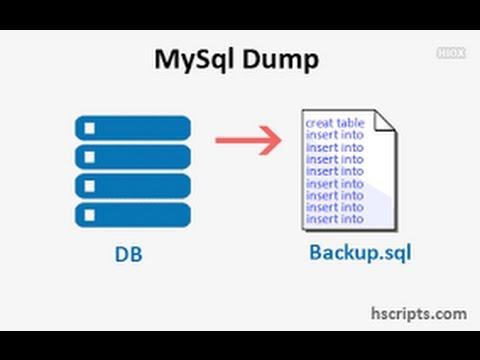
Monitoring and Managing Your Backups: Tools and Tips
When it comes to safeguarding your MySQL databases, effective monitoring and management of backups is crucial. MyDumper offers a seamless way to perform backups, but it’s equally significant to ensure you’re keeping track of them. Here are some practical tools and tips to optimize your backup process.
Set Up Automated Backups
One of the simplest yet most effective ways to monitor your backups is to automate the process. With MyDumper, you can schedule regular backups using cron jobs. This not only saves time but also guarantees that your data is consistently backed up without manual intervention. Consider the following:
- choose a frequency that suits your data update rate (e.g., daily, weekly).
- Use descriptive filenames that include the date and time for easy identification.
- Log all backup activities to monitor success or failure.
Utilize Monitoring Tools
Along with automation, leverage monitoring tools to keep an eye on your backup processes. Tools like Prometheus or Grafana can definitely help visualize your backup metrics. A well-configured monitoring setup can notify you of any issues in real-time, ensuring quick actions can be taken. Here’s what to focus on:
- Track the duration of backup jobs to identify any performance issues.
- Monitor disk space usage to avoid running out of storage.
- Set up alerts for backup failures or anomalies.
Implement Testing Procedures
Backing up your database is only half the battle; restoring it is indeed equally critically important. Regularly test your backups by performing trial restorations. This ensures that your backup files are not only intact but also functional. Create a testing schedule and maintain a simple table to track your test results:
| Date of Test | Backup File | Status |
|---|---|---|
| 2023-10-01 | backup_2023_10_01.sql | Prosperous |
| 2023-10-08 | backup_2023_10_08.sql | Failed |
| 2023-10-15 | backup_2023_10_15.sql | Successful |
Document Your Backup Strategy
it pays to have a well-documented backup strategy. Outline your backup processes, including the tools you use, schedules, and restoration procedures. This documentation will serve as a valuable resource not just for you, but for anyone else who may work with your data in the future. Consider including:
- Custom scripts or commands used during the backup process.
- Contact information for team members responsible for backups.
- Links to external resources or guides for troubleshooting.
By adopting these practices, you’ll ensure that your MySQL databases are not just backed up, but that you’re also prepared for any eventual data recovery needs.

Troubleshooting Common MyDumper Issues: Solutions at Your Fingertips
When using MyDumper for MySQL backup and restore, you might encounter a few common issues that can hinder your progress. Thankfully, these problems usually have straightforward solutions that can save you time and frustration. Below, we explore some typical issues and their remedies, ensuring your backup and restore process goes smoothly.
1. insufficient Disk Space: One of the most frequent errors users face is running out of disk space during the backup process. To tackle this issue, consider the following:
- Check your available disk space regularly before initiating a backup.
- Utilize the
--compressoption to reduce the size of the backup files. - Perform incremental backups to minimize the amount of data being backed up at once.
2. Connection Timeouts: If you’re working with large databases, connection timeouts can occur, disrupting your backup or restore process. Here are some tips to prevent this issue:
- Increase the timeout settings in your MySQL configuration.
- Use the
--max-timeoption with MyDumper to set a limit on the execution time for each backup operation. - Consider splitting the backup into smaller chunks to maintain a stable connection.
3. Inconsistent Data: During restoration,you might notice discrepancies if the backup was interrupted. To ensure data consistency:
- Always use the
--lock-tablesoption when backing up to prevent changes during the process. - Verify the integrity of your backup files using the
--checksum feature. - After restoration, run
CHECK TABLEon critical tables to ensure they are intact.
Resolving MyDumper issues can be straightforward if you know what to look for.By following these tips, you can enhance your MySQL backup and restore experience, ensuring that your data remains safe and accessible whenever you need it.
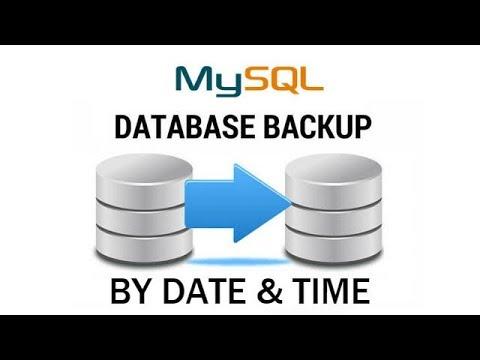
Enhancing Performance: Optimizing MySQL Backups with MyDumper
When it comes to backing up MySQL databases, performance is often a critical concern. MyDumper presents a powerful alternative to traditional backup methods by offering an efficient and parallelized approach to data extraction. This ensures that your backup processes not only run faster but also minimize the impact on your live database operations.
One of the standout features of MyDumper is its ability to perform multithreaded backups. By leveraging multiple threads, MyDumper can read from the database and write to files simultaneously. This can significantly reduce the time it takes to create a backup,especially for large databases. Here’s how you can take advantage of this feature:
- Configure Thread Count: Adjust the number of threads based on your server’s capabilities and the database size.
- Use Compression: MyDumper allows for on-the-fly compression, which can save disk space and I/O operations.
- Split Backups: Utilize the split option to create smaller, manageable files that are easier to handle.
Along with its speed, MyDumper also supports consistency through transaction handling. By performing backups with locks, you can ensure that the data remains stable and accurate without risking corruption.The following table summarizes the key benefits of using MyDumper over traditional methods:
| Feature | MyDumper | Traditional Backup |
|---|---|---|
| Speed | High (multithreaded) | Moderate (single-threaded) |
| Disk Space | Compressed output | Uncompressed output |
| Data Integrity | Consistent snapshots | Potential inconsistencies |
| Ease of Use | User-friendly CLI | Complex setup |
Moreover, the ease of restoring backups with MyDumper is another reason to consider this tool. With its straightforward command-line interface,you can quickly restore data without extensive downtime. The restoration process also supports parallel loading, allowing you to bring your database back online in no time. by choosing MyDumper, you’re not just opting for a backup solution; you’re adopting a strategy that enhances your database performance and reliability.
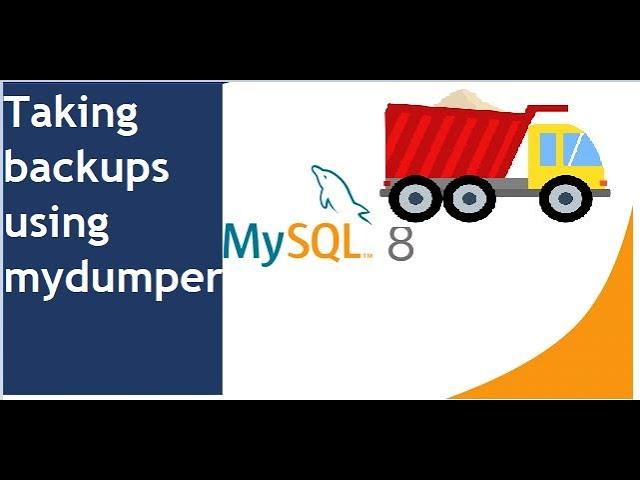
Real-life Use Cases: Success Stories of MyDumper in Action
When it comes to managing databases, real-world challenges often arise that require innovative solutions. mydumper has emerged as a powerful tool in the realm of MySQL backup and restore, with numerous success stories highlighting its effectiveness in various scenarios. Take, as an example, the case of a rapidly growing e-commerce platform that faced downtime due to slow backup processes. By integrating mydumper, they significantly reduced their backup time from hours to mere minutes, allowing them to maintain operational continuity and focus on customer satisfaction.
in another instance, a financial services company had to ensure data integrity and rapid recovery due to stringent regulatory requirements. They adopted MyDumper for its parallel processing capabilities, which not only sped up their backup but also provided a reliable restore solution. Their backup strategy transformed from a cumbersome task into a seamless process, allowing them to comply with regulations while minimizing risk.This transition not only saved them time but also reduced the costs associated with data management.
Consider also a healthcare provider that needed to backup sensitive patient data without compromising security. With MyDumper’s ability to perform encrypted backups,they were able to secure patient information while ensuring that recovery procedures were efficient and effective. The result? A robust data protection strategy that met compliance standards and safeguarded patient trust.
| Use Case | Challenge | Solution | Outcome |
|---|---|---|---|
| E-commerce Platform | Slow backups | MyDumper integration | Reduced backup time from hours to minutes |
| Financial services | Regulatory compliance | Parallel processing of backups | efficient backup and restore processes |
| Healthcare Provider | Data security | Encrypted backups | Secure patient data and compliance |
the versatility of MyDumper does not end there. A startup in the tech industry faced difficulties in scaling their database during peak demand times. by utilizing MyDumper, they implemented an efficient, automated backup system that not only handled increased loads but also ensured that data was readily available for restoration when needed. This proactive approach allowed them to focus on growth and innovation without the looming fear of data loss.
These success stories illustrate the transformative impact of MyDumper in real-world applications. Whether it’s enhancing speed, ensuring data security, or complying with regulatory frameworks, MyDumper has proven to be a game-changer for organizations across various industries. Its ability to adapt to different needs while providing reliable performance makes it an invaluable asset in database management.
Frequently Asked questions (FAQ)
Q&A: MySQL Backup and Restore with MyDumper
Q: What is MyDumper, and why should I consider using it for MySQL backups?
A: MyDumper is a high-performance MySQL backup and restore tool that stands out as of its speed and efficiency. Unlike traditional tools, MyDumper uses multi-threading, allowing it to handle large databases much faster. If you’re looking to save time and reduce downtime during backup and restore processes, MyDumper is definitely worth considering.
Q: How does MyDumper improve backup performance compared to other tools?
A: MyDumper uses a multi-threaded approach to write data,which means it can process multiple tables simultaneously. This is a game changer for large databases, reducing the backup time significantly. Traditional tools often work in a single-threaded manner, leading to longer wait times.if efficiency is a priority for your operations, MyDumper is the tool you need.
Q: Can I use MyDumper for both backup and restore?
A: Absolutely! MyDumper is designed to handle both tasks seamlessly. You can create backups with MyDumper, and when it’s time for a restore, MyLoader—its counterpart—comes into play. This two-tool system ensures that you can quickly and effectively manage your data with minimal hassle.
Q: Is MyDumper easy to set up and use?
A: Yes, it’s quite user-friendly. The installation process is straightforward, and there’s comprehensive documentation available to help you get started. Even if you’re not a MySQL expert, you can follow the simple command-line instructions to set up your backups and restores. plus, once you get the hang of it, you’ll appreciate how intuitive the commands are!
Q: What kind of performance improvements can I expect with MyDumper?
A: Users have reported backups that are 5 to 20 times faster compared to traditional methods, especially for larger databases. This can translate to significant time savings—so if your business relies on quick data availability,the performance benefits are substantial.
Q: Are there any special requirements to use MyDumper?
A: MyDumper runs on Linux, so you’ll need to have a compatible system. Additionally,it requires MySQL or MariaDB,but most modern systems will support this. Just make sure your MySQL version is supported, and you’re good to go!
Q: What about data integrity? Is MyDumper reliable?
A: Absolutely! MyDumper is designed to maintain data integrity during the backup process. It uses consistent snapshots, so you can rest assured that your data will be accurate and reliable when restored. You won’t have to worry about corruption or loss—Your data is safe with MyDumper.
Q: How does MyDumper handle large databases?
A: MyDumper shines when it comes to large databases. Its multi-threaded architecture means it can efficiently handle the increased workload without sacrificing performance. It also allows you to split backups into smaller chunks, making it easier to manage and restore portions of your database if needed.
Q: Can MyDumper help with scheduled backups?
A: Yes! You can easily script MyDumper and integrate it into your cron jobs for automated, scheduled backups. This feature allows you to maintain regular data backups without manual intervention, ensuring that your data is always protected.
Q: Are there any costs involved with using MyDumper?
A: MyDumper is open-source and free to use, which is a huge advantage for businesses looking to save on software costs. However, if you want additional features or support, you might want to look into paid options or community support. But for most users, the free version is more than sufficient.
Q: How do I get started with MyDumper?
A: Getting started is easy! Simply download the MyDumper software from its official repository, follow the installation guide, and check out the documentation for command-line usage. Before you know it, you’ll be backing up and restoring your MySQL databases like a pro!
Closing Statement:
If you’re looking for a reliable, efficient way to manage your MySQL backups, MyDumper is an excellent choice. Its speed, ease of use, and reliability make it a top contender in the world of data management.Don’t wait—give MyDumper a try and experience the difference for yourself!
The Conclusion
As we wrap up our journey through MySQL backup and restore using MyDumper, let’s take a moment to reflect on the power and versatility this tool brings to your database management strategy. In the world of data, ensuring that your information is safe and easily recoverable is not just a good practice; it’s a necessity.
By implementing MyDumper, you’re not just safeguarding your data; you’re embracing an efficient, high-performance solution that can save you both time and headaches down the line.Imagine the peace of mind that comes with knowing your backups are not only quick to perform but also easy to restore whenever the need arises.
So, why wait? Dive in and give MyDumper a try in your next backup routine. Once you experience its speed and reliability, you’ll wonder how you ever managed without it.Remember, every database deserves the best care, and with MyDumper, you can take your MySQL management to the next level. Happy backing up!


